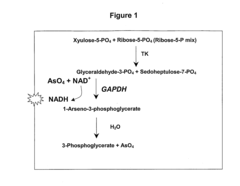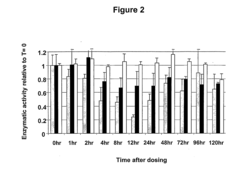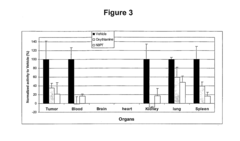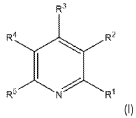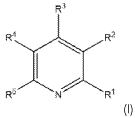Pentose Phosphate Pathway: Enhancing Antioxidant Defense
Research Background and Objectives
The Pentose Phosphate Pathway (PPP) is a fundamental metabolic pathway in cellular biochemistry, playing a crucial role in maintaining cellular redox balance and providing essential precursors for biosynthesis. Discovered in the 1950s, the PPP has been the subject of extensive research due to its significance in various biological processes, including antioxidant defense mechanisms.
The primary objective of this technical research report is to explore the potential of enhancing antioxidant defense through the modulation of the Pentose Phosphate Pathway. This goal aligns with the growing interest in developing strategies to combat oxidative stress, which is implicated in numerous pathological conditions, including cancer, neurodegenerative diseases, and aging.
The PPP consists of two distinct phases: the oxidative phase and the non-oxidative phase. The oxidative phase is particularly relevant to antioxidant defense, as it generates NADPH (nicotinamide adenine dinucleotide phosphate), a critical cofactor for maintaining cellular redox homeostasis. NADPH serves as an electron donor for various antioxidant systems, including glutathione reductase and thioredoxin reductase, which are essential for neutralizing reactive oxygen species (ROS) and preventing oxidative damage.
Recent advancements in our understanding of the PPP have revealed its intricate regulation and its interplay with other metabolic pathways. These discoveries have opened up new avenues for potential therapeutic interventions aimed at enhancing antioxidant defense mechanisms. By modulating the activity of key enzymes in the PPP, such as glucose-6-phosphate dehydrogenase (G6PD), it may be possible to boost NADPH production and, consequently, improve cellular antioxidant capacity.
The evolution of research in this field has been marked by significant milestones, including the elucidation of the PPP's role in cancer metabolism, its involvement in neurodegenerative diseases, and its potential as a target for drug development. As we delve deeper into the molecular mechanisms governing the PPP, we aim to identify novel approaches to harness its antioxidant-enhancing potential.
This technical research report will provide a comprehensive overview of the current state of knowledge regarding the Pentose Phosphate Pathway and its role in antioxidant defense. We will explore the latest findings, emerging technologies, and potential applications in various fields, including medicine, biotechnology, and nutrition. By examining the PPP through the lens of antioxidant enhancement, we seek to uncover innovative strategies that could lead to breakthroughs in the prevention and treatment of oxidative stress-related disorders.
Market Analysis for Antioxidant Enhancement
The market for antioxidant enhancement technologies, particularly those leveraging the Pentose Phosphate Pathway (PPP), has shown significant growth potential in recent years. This surge is driven by increasing consumer awareness of the health benefits associated with antioxidants and the rising prevalence of oxidative stress-related diseases.
The global antioxidant market, which encompasses various sectors including food and beverages, cosmetics, and pharmaceuticals, has been experiencing steady growth. A key driver of this market is the growing demand for natural and plant-based antioxidants, which aligns well with PPP-based antioxidant enhancement strategies.
In the pharmaceutical and nutraceutical sectors, there is a notable trend towards developing products that can boost the body's natural antioxidant defense mechanisms. This shift from traditional antioxidant supplementation to enhancing endogenous antioxidant production presents a significant opportunity for PPP-focused technologies.
The cosmetics industry has also shown increased interest in antioxidant-enhancing technologies. Anti-aging products, in particular, are a major growth area where PPP-based antioxidant enhancement could find substantial applications. The market for such products is expected to expand further as the global population ages and consumers become more conscious of skin health.
In the food and beverage industry, functional foods and drinks fortified with antioxidants continue to gain popularity. There is potential for PPP-enhancing ingredients to be incorporated into these products, offering a unique selling point in an increasingly competitive market.
Geographically, North America and Europe currently lead the antioxidant market, but Asia-Pacific is emerging as a rapidly growing region. This growth is attributed to increasing disposable incomes, changing lifestyles, and growing health awareness in countries like China and India.
The market for antioxidant enhancement technologies faces some challenges, including regulatory hurdles and the need for extensive clinical trials to prove efficacy. However, the increasing body of research supporting the role of the Pentose Phosphate Pathway in antioxidant defense provides a strong foundation for market growth.
Looking ahead, the market for PPP-based antioxidant enhancement technologies is poised for significant expansion. As research continues to uncover the intricate relationships between cellular metabolism, oxidative stress, and various health conditions, the demand for innovative antioxidant solutions is likely to increase across multiple industries.
Current Status and Challenges
The Pentose Phosphate Pathway (PPP) has gained significant attention in recent years due to its crucial role in cellular antioxidant defense mechanisms. Currently, the PPP is well-established as a key metabolic pathway that generates NADPH and ribose-5-phosphate, essential for maintaining cellular redox balance and nucleotide synthesis. However, despite its importance, several challenges persist in fully harnessing the PPP's potential for enhancing antioxidant defense.
One of the primary challenges is the complex regulation of the PPP. The pathway is tightly controlled by various factors, including substrate availability, enzyme activity, and cellular redox state. This intricate regulation makes it difficult to manipulate the pathway for therapeutic purposes without causing unintended consequences in other metabolic processes. Researchers are still working to fully elucidate the regulatory mechanisms and develop targeted approaches to modulate PPP activity.
Another significant challenge lies in the tissue-specific variations of PPP activity. Different tissues exhibit varying levels of PPP flux, which complicates the development of universal strategies for enhancing antioxidant defense through this pathway. For instance, while the PPP is highly active in rapidly proliferating cells and tissues with high biosynthetic demands, its activity may be limited in other cell types. This heterogeneity necessitates the development of tissue-specific interventions to effectively leverage the PPP for antioxidant defense.
The interplay between the PPP and other metabolic pathways also presents a challenge. The PPP is closely linked to glycolysis, the tricarboxylic acid cycle, and lipid metabolism. Altering PPP flux can have far-reaching effects on these interconnected pathways, potentially leading to metabolic imbalances. Researchers are working to develop strategies that can selectively enhance PPP activity without disrupting overall cellular metabolism.
Furthermore, the role of PPP in disease states remains an area of active investigation. While the pathway's importance in cancer metabolism is well-documented, its involvement in other pathological conditions, such as neurodegenerative diseases and cardiovascular disorders, is still being explored. Understanding how PPP dysfunction contributes to these diseases and developing targeted interventions remains a significant challenge.
From a technological standpoint, the development of tools for real-time monitoring of PPP flux in living cells and tissues is an ongoing challenge. Current methods often rely on endpoint measurements or isotope tracing, which provide limited temporal resolution. Advanced imaging techniques and biosensors are being developed to overcome this limitation and enable dynamic monitoring of PPP activity.
Lastly, translating the knowledge of PPP biology into effective therapeutic strategies remains a major hurdle. While several compounds have been identified that can modulate PPP activity, their specificity, efficacy, and safety in clinical settings are yet to be fully established. The development of targeted drug delivery systems and the identification of novel PPP modulators are active areas of research aimed at overcoming this challenge.
Current Antioxidant Enhancement Strategies
01 Enhancing antioxidant defense through pentose phosphate pathway modulation
Modulating the pentose phosphate pathway can enhance cellular antioxidant defense mechanisms. This approach involves increasing the production of NADPH, a crucial molecule for maintaining cellular redox balance and protecting against oxidative stress. By upregulating key enzymes in the pathway, cells can better cope with reactive oxygen species and maintain their antioxidant capacity.- Enhancing antioxidant defense through pentose phosphate pathway modulation: Modulating the pentose phosphate pathway can enhance cellular antioxidant defense mechanisms. This approach involves increasing the production of NADPH, a crucial molecule for maintaining cellular redox balance and protecting against oxidative stress. By upregulating key enzymes in the pathway, such as glucose-6-phosphate dehydrogenase, cells can better cope with oxidative challenges and maintain their antioxidant capacity.
- Genetic engineering to boost pentose phosphate pathway activity: Genetic modification techniques can be employed to enhance the activity of the pentose phosphate pathway for improved antioxidant defense. This may involve overexpressing key enzymes or regulatory proteins involved in the pathway, or modifying transcription factors that control the expression of pathway components. Such genetic interventions can lead to increased NADPH production and improved cellular resistance to oxidative stress.
- Metabolic reprogramming for enhanced antioxidant production: Redirecting cellular metabolism towards the pentose phosphate pathway can boost the production of antioxidant molecules. This metabolic reprogramming may involve altering the flux of glucose through various pathways, favoring the pentose phosphate pathway to generate more reducing equivalents and antioxidant precursors. Such strategies can enhance the cell's ability to neutralize reactive oxygen species and maintain redox homeostasis.
- Pharmacological activation of pentose phosphate pathway for antioxidant defense: Small molecule activators or inhibitors can be used to modulate the pentose phosphate pathway and enhance antioxidant defense. These compounds may target key enzymes or regulatory proteins in the pathway, leading to increased flux through the oxidative branch and elevated NADPH production. This pharmacological approach offers potential therapeutic strategies for conditions associated with oxidative stress.
- Integration of pentose phosphate pathway with other antioxidant systems: Coordinating the pentose phosphate pathway with other cellular antioxidant systems can provide a more robust defense against oxidative stress. This may involve synchronizing the pathway with glutathione metabolism, thioredoxin systems, or other redox-sensitive pathways. Such integration can lead to a more efficient and comprehensive antioxidant response, enhancing cellular resilience to oxidative challenges.
02 Genetic engineering of pentose phosphate pathway enzymes
Genetic modification of enzymes involved in the pentose phosphate pathway can improve antioxidant defense. This includes overexpression of glucose-6-phosphate dehydrogenase, 6-phosphogluconate dehydrogenase, and transaldolase. These engineered enzymes can increase NADPH production and enhance the cell's ability to neutralize free radicals and oxidative stress.Expand Specific Solutions03 Metabolic flux analysis for optimizing antioxidant production
Utilizing metabolic flux analysis to study and optimize the pentose phosphate pathway can lead to improved antioxidant defense strategies. This approach involves analyzing the flow of metabolites through the pathway and identifying rate-limiting steps. By understanding these dynamics, researchers can develop targeted interventions to enhance the production of antioxidant molecules and improve cellular protection against oxidative damage.Expand Specific Solutions04 Integration of pentose phosphate pathway with other antioxidant systems
Combining the pentose phosphate pathway with other cellular antioxidant systems can create a more robust defense against oxidative stress. This integrated approach may involve coordinating the pentose phosphate pathway with glutathione metabolism, thioredoxin systems, and other redox-sensitive pathways. Such integration can lead to synergistic effects in maintaining cellular redox balance and protecting against oxidative damage.Expand Specific Solutions05 Development of small molecule modulators for pentose phosphate pathway
Creating small molecule modulators that target specific enzymes or regulatory elements of the pentose phosphate pathway can enhance antioxidant defense. These modulators can be designed to increase flux through the pathway, boost NADPH production, or activate antioxidant response elements. Such compounds could have potential therapeutic applications in conditions associated with oxidative stress and impaired antioxidant defense.Expand Specific Solutions
Key Players in Research
The Pentose Phosphate Pathway's role in enhancing antioxidant defense is an emerging field in the mature biotechnology industry. The market for antioxidant-related products and therapies is substantial and growing, driven by increasing health awareness and aging populations. Technologically, this area is in a transitional phase, with established players like BASF SE and DuPont de Nemours, Inc. leading in industrial applications, while academic institutions such as Jiangnan University and Shanghai Jiao Tong University are pushing boundaries in research. Pharmaceutical companies like Bayer Pharma AG and ModernaTX, Inc. are exploring therapeutic applications, indicating a shift towards more specialized, high-value products in this field.
Ajinomoto Co., Inc.
BASF SE
Key Innovations in Pentose Phosphate Pathway Modulation
- A fluorescence-based assay that measures the enzymatic activities of these enzymes in cell lysates, tissues, and blood, providing increased sensitivity and convenience by eliminating the need for enzyme isolation and reducing sample manipulation, allowing for high-throughput analysis.
- Compounds that inhibit 6-phosphogluconate dehydrogenase (6PGD) are administered to modulate immune responses by stimulating cytotoxic T cell levels and activity, increasing granzyme and interferon production, and reducing immune inhibitory cells, thereby enhancing anti-tumor immunity.
Metabolic Engineering Approaches
Metabolic engineering approaches have emerged as powerful tools for enhancing the pentose phosphate pathway (PPP) and improving cellular antioxidant defense mechanisms. These strategies focus on modifying the expression levels of key enzymes involved in the PPP, as well as introducing novel metabolic routes to increase the production of NADPH and other reducing equivalents.
One primary approach involves overexpressing glucose-6-phosphate dehydrogenase (G6PD), the rate-limiting enzyme of the PPP. By increasing G6PD activity, researchers have successfully enhanced NADPH production and improved cellular resistance to oxidative stress in various organisms, including bacteria, yeast, and mammalian cells. This strategy has shown particular promise in enhancing the productivity of industrial microorganisms and improving the stress tolerance of crop plants.
Another effective method is the manipulation of 6-phosphogluconate dehydrogenase (6PGD), the second NADPH-producing enzyme in the PPP. Overexpression of 6PGD, often in combination with G6PD, has been demonstrated to further boost NADPH levels and antioxidant capacity. This dual-enzyme approach has been successfully applied in metabolic engineering efforts to improve the production of valuable metabolites and increase cellular robustness against environmental stressors.
Researchers have also explored the potential of modulating transaldolase (TAL) and transketolase (TKT) enzymes, which are involved in the non-oxidative branch of the PPP. By fine-tuning the expression of these enzymes, it is possible to optimize the balance between NADPH production and the generation of sugar phosphate intermediates, leading to improved overall pathway efficiency and enhanced antioxidant defense.
In addition to enzyme overexpression, metabolic engineering approaches have included the introduction of alternative NADPH-generating pathways. For instance, the incorporation of NADP+-dependent glyceraldehyde-3-phosphate dehydrogenase or the engineering of NADP+-dependent isocitrate dehydrogenase has been shown to complement the PPP in NADPH production, further bolstering cellular antioxidant capacity.
Recent advancements in synthetic biology and genome editing techniques, such as CRISPR-Cas9, have greatly expanded the toolkit available for metabolic engineering of the PPP. These technologies allow for precise genetic modifications, enabling researchers to fine-tune enzyme expression levels, introduce novel metabolic pathways, and optimize flux distribution through the PPP with unprecedented accuracy and efficiency.
Regulatory Considerations for Pentose Phosphate Pathway Modulation
Regulatory considerations for modulating the Pentose Phosphate Pathway (PPP) are crucial for ensuring the safety and efficacy of potential therapeutic interventions. The PPP plays a vital role in cellular antioxidant defense, and any manipulation of this pathway must be carefully evaluated within the existing regulatory frameworks.
In the United States, the Food and Drug Administration (FDA) would likely classify PPP modulators as drugs, subject to rigorous clinical trials and safety assessments. The FDA's Center for Drug Evaluation and Research (CDER) would oversee the approval process, requiring extensive preclinical and clinical data to demonstrate both safety and efficacy. Particular attention would be given to potential off-target effects, as the PPP intersects with numerous metabolic pathways.
The European Medicines Agency (EMA) would apply similar scrutiny in the European Union. Their guidelines on first-in-human clinical trials would be particularly relevant, given the novel nature of PPP modulation as a therapeutic strategy. The EMA's Committee for Medicinal Products for Human Use (CHMP) would likely require robust evidence of the proposed mechanism of action and its impact on cellular metabolism.
Regulatory bodies worldwide would be concerned with the long-term effects of altering such a fundamental metabolic pathway. Chronic toxicity studies and carcinogenicity assessments would be essential components of the regulatory dossier. The potential for PPP modulation to affect glucose metabolism and lipid synthesis would necessitate careful monitoring of metabolic parameters in clinical trials.
Environmental regulatory considerations may also come into play, particularly if the development of PPP modulators involves genetically modified organisms or novel synthetic processes. Agencies such as the Environmental Protection Agency (EPA) in the US might require additional safety assessments.
Given the potential for PPP modulation to impact cellular redox status, regulators may require specific biomarker studies to monitor oxidative stress levels in patients. This could lead to the development of companion diagnostics, which would themselves be subject to regulatory approval processes.
The regulatory pathway for PPP modulators would likely be complex and time-consuming. Early engagement with regulatory agencies through pre-IND (Investigational New Drug) meetings and scientific advice procedures would be crucial for streamlining the development process. Companies pursuing this avenue should be prepared for a multi-year development timeline and substantial investment in regulatory affairs expertise.

